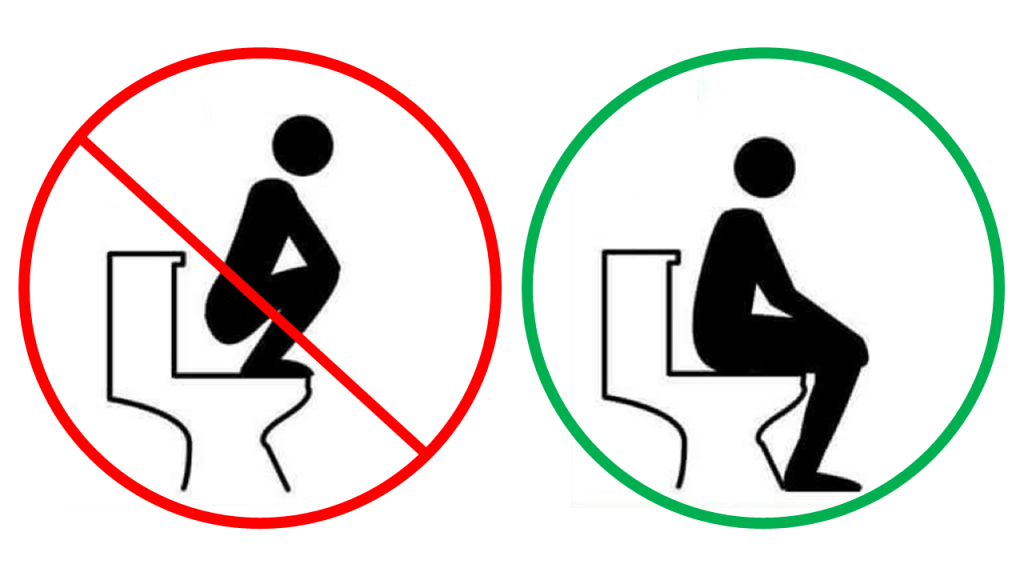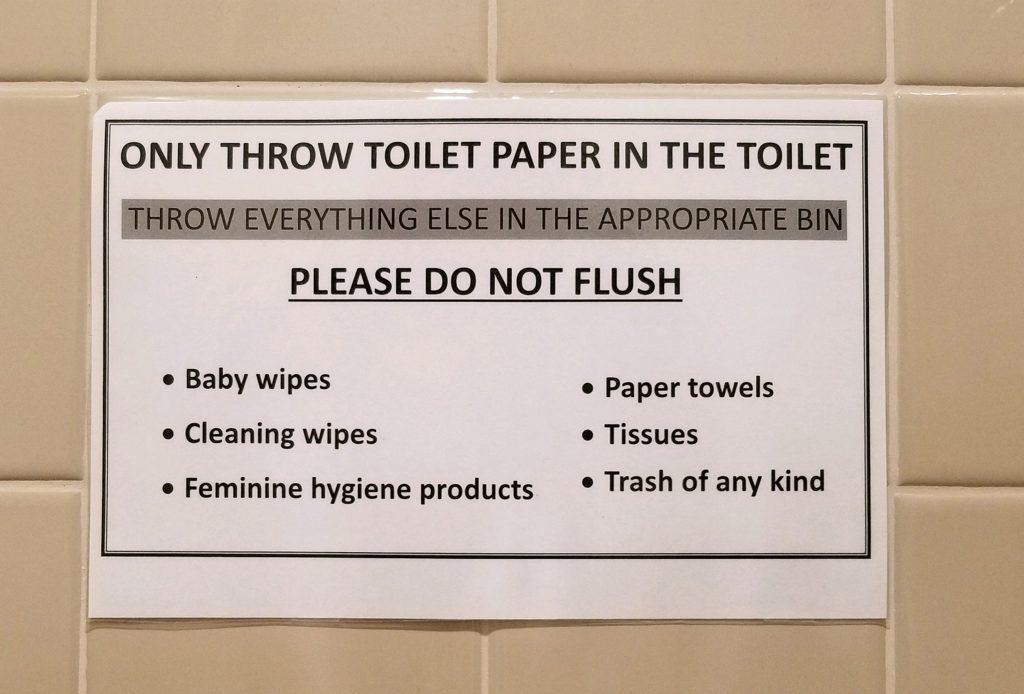
By LENNY KOUPAL, CSU Communications Coordinator
My wife and I recently were fortunate enough to travel to the Dominican Republic. Stepping outside one’s country of origin offers exciting cultural experiences with people and places. Being a neophyte international traveler – from a fly-over state no less – I have to admit I was naïve about international customs and habits.
And, while many of us are accustomed to the CSU with its automatic flushing toilets and dispensers with giant rolls of toilet paper, some of these bathroom amenities are literally foreign – if not disgusting – to new international students.
– LENNY KOUPAL
It made me think about our international students and all the challenges they face. Many, like me, have not traveled outside their customary surroundings. And, while many of us are accustomed to the CSU with its automatic flushing toilets and dispensers with giant rolls of toilet paper, some of these bathroom amenities are literally foreign–if not disgusting-to new international students.
So, while toilet talk may seem taboo, I thought I would look at international bathroom etiquette and habits to help enlighten us all. Perhaps the first big difference is understanding the wiping versus washing etiquette. Further understanding considers various bathroom fixtures and plumbing.
AMERICAN (and CANADIAN): Here in the United States, toilet paper has been a staple since the mid-1850s. Before that, everything from corn cobs to Sears & Roebuck catalog pages were used to complete the bathroom act. Today, pulp from recycled paper or millions of trees create those essential rolls of TP (the average American uses 57 sheets of TP a day). Being caught without toilet paper is certainly an American conundrum.
Toilet paper remained popular with the arrival of indoor plumbing that created toilets designed for #1 or #2. When it came to the big job, drop-down seats provide a comfortable place to park your bum. It also created a battle of the sexes with men chided for peeing without lifting the seat (disgusting) and then lowering it when finished (a precautionary measure from keeping the next user, especially a woman, from sitting into the toilet bowl).
Note from Canada: In some Canadian parks, signs dissuade persons used to squat toilets from standing on toilet seats. “We’ve noticed that some visitors who aren’t used to Western-style toilets – they may attempt to stand up on the seats when using the toilet,” said a park manager. “Because the toilet is not designed for that, it ultimately creates problems with cleanliness.” Squatting from atop the toilet seat also poses safety concerns and results in broken seats or toilet seals.

Helpful note: Toilets and plumbing in the U.S. can handle most duties but excessive toilet paper and the greatly discouraged flushing of paper towels can definitely clog the plumbing.
Helpful note: A plugged and overflowing toilet is certainly another American conundrum. Plungers – traditionally large suction cups on sticks – can often come to the rescue but usually after a bout of panic or grossness.
Men’s restrooms were further advanced with the option of walk-up toilets that moved from troughs to stand-up urinals.
Helpful note: Paper products should never be thrown into urinals.
CENTRAL AND SOUTH AMERICA: In Central and South America as well as in Eastern Europe, there is a trash can next to the toilet to dispose of the tissue. This is because the toilet does not have enough strength to flush it all down.
ASIAN: Squat toilets are prevalent throughout Asian countries. The squat toilet is a floor level porcelain bowl often accompanied by a tub of water and a waste dispenser for depositing used tissues. (Many of these toilets do not come with toilet paper, so bringing your own is highly recommended). While Americans sit facing the front of the toilet, users of squat toilets generally squat facing the back of the toilet. Squat toilets are considered more sanitary because users do not come in direct contact with the toilet fixture. They are also considered more anatomically correct for efficient bowel movement. Afterward, water is dipped from the bucket and used to clean oneself as well as wash out the bowl.
Some toilets use Western-style toilets and come with nearby spray hoses for a bidet sort of cleansing. Similar to Latin American countries and areas of Eastern Europe, plumbing in regions of Asia cannot handle flushed toilet paper, thus, any used tissue used to finish cleanup is thrown into nearly rubbish bins.
Some toilets in Japan are said to be among the most sophisticated and fascinating in the world with various technology for the full bathroom effect. Note that in Japan, special bathroom slippers are used when entering the stall.
Buddhist toilet rules instruct monks to cough when entering a public bathroom. Anyone already using the facility is expected to cough in response.
Helpful note: To flush or not to flush? Since not all plumbing systems are equal, look for the small trashcan as a clue for flushing. Like the Dominican Republic, you may come across this in Mexico, Turkey, Greece, Egypt, and Ukraine. However, in Singapore, you could be fined for not flushing.
ISLAMIC: Strict Muslim code requires that all Muslims must squat or sit – but not stand – when relieving themselves. Toilet use follows Islamic faith which generally means washing with water as an act of purity rather than less thorough use of toilet paper (this rule has been relaxed in Turkey where use of toilet paper is allowed but cleansing with water is still preferred). Many regions of faith direct Muslims to use a lota, a small water-filled pot, to cleanse themselves. Continued use of water for private cleansing by internationals coming to the U.S. creates awkward, uncomfortable situations, particularly in public restrooms. Ritual ablution requires the use of the left hand for cleansing the region with water (because of this ritual, shaking hands with the left hand is considered offensive as Muslims perform most actions, including eating, with their right hand).
Helpful Note: Wudu is an Islamic procedure for cleansing parts of the body for ritual purification before prayer. Cleansing involves washing the hands, mouth, nostrils, arms, head and feet. For safety reasons, the CSU has a foot washing room, however, public restrooms are frequently used for this purification process.
Helpful Note: About 70 to 75 percent of the global population does not use toilet paper. Water is preferred over paper.
EUROPE: While many bathrooms use Western-style toilets, a big difference in public restrooms is you usually have to pay to use them. Like the Dominican Republic, some European bathrooms have female attendants in the male restrooms. They also have gender-neutral bathrooms with separate toilet areas but shared hand-washing facilities. Bidets are also common in Europe.
RUSSIA: In Russia, it is common to find a toilet stall on a raised platform which wouldn’t meet U.S. American Disabilities Act expectations. Likewise, don’t expect to find ADA compliant bathrooms, baby changing stations or lactation spaces in developing countries as well as regions of Europe.
GREECE: While the Greek civilization is often credited with creating the first flushing toilet around 800 B.C., modern-day plumbing in Greece normally has only 2-inch pipes – about half the size of normal American plumbing. Therefore, the flushing of toilet paper can easily cause clogging issues. Paper is used to clean up and deposited into garbage bins.
AUSTRALIA: Like other areas faced with water issues, Australia uses the two-buttoned flush system. Basically, it’s like delivering a half flush or full flush. Also, Aussies never call it a “bathroom” – it’s either the toilet, the loo or “the dunny.”
